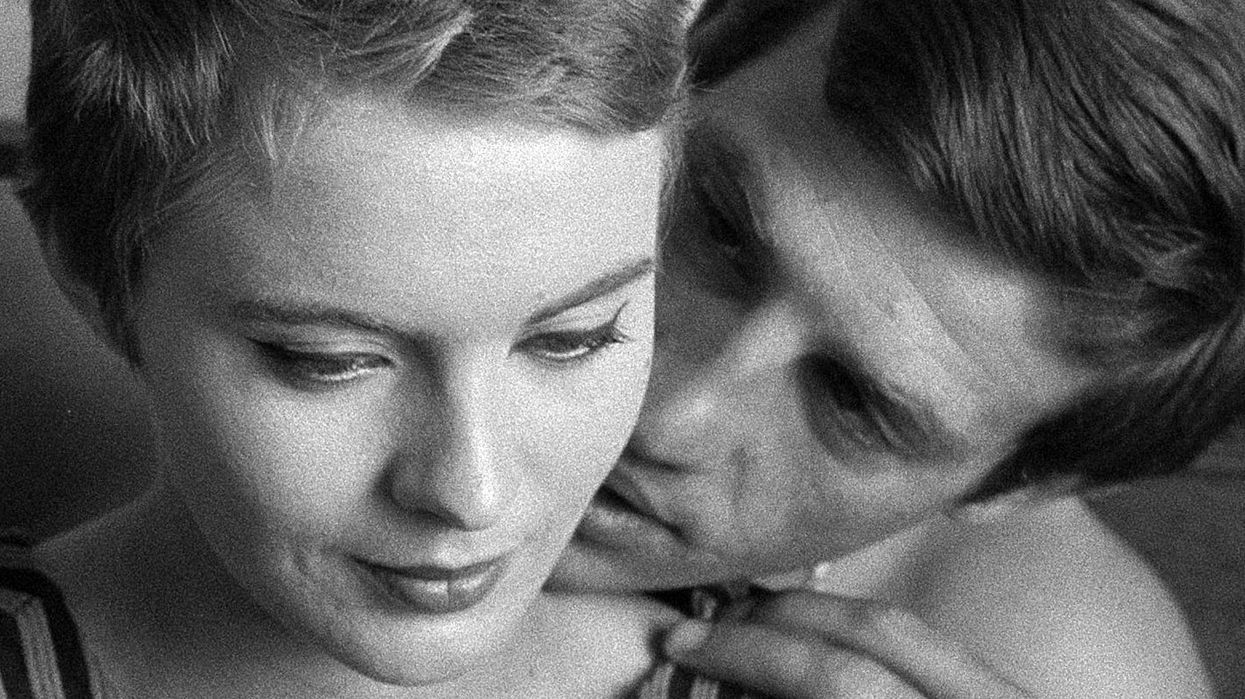RIP 'Breathless' Cinematographer Raoul Coutard: How He Transformed Cinema
Raoul Coutard, the French cinematographer who shot Godard's Breathless, has passed away at the age of 92.

One of the greatest cinematographers in history never intended to make movies. In fact, when Raoul Coutard picked up a movie camera to shoot a major production with French director Pierre Schoendoerffer, he was doing so for the very first time.
"I agreed," Coutard told The Guardian, "but if I had known that the job was actually Director of Photography and that the film was to be in Cinemascope, I would never have said yes. You know, I had no idea what a cinematographer was when I made that first film."
Coutard went on to become the preeminent cinematographer of the French New Wave movement. Across 75 films and a half century, Coutard pushed the boundaries of cinematic language through collaborations with Jean-Luc Godard (Breathless, A Woman is a Woman, and Weekend, among others), Francois Truffaut (Jules et Jim), Jacques Demy (Lola), and Costa-Gavras (Z). He shot his final film, Sauvage Innocence, in 2001 with Philippe Garrel.

Originally a war photographer, Coutard spent 11 years documenting the French Indo-China conflict and as a freelance photojournalist based in Vietnam. Some of his best work was featured in the prestigious but now-defunct Look magazine. So when Schoendoerffer asked Coutard to "photograph" La Passe du Diable, Coutard assumed he was being hired for just that: still photography.
With that first film, he faked it 'till he made it.
A French producer took notice of Coutard's burgeoning talent and approached him about shooting a young film critic's feature debut. "[Godard told me,] 'We will shoot this film as if we were reporting a story,'" remembered Coutard, "and since I was a photojournalist, that suited me."
From whence emerged Coutard's singular aesthetic. Today, his work on Breathless is the cornerstone of the French New Wave's vivacious imagery; his roving camera captured black-and-white visuals that were at once documentary-style and deliberate. He shot Breathless handheld (on the Eclair Cameflex), using only natural lighting, which was unprecedented at the time. "The big idea was to do more realistic photography," Coutard told the ASC. "No one had ever proposed shooting an entire fiction film handheld."
"Each time we made a movie, Godard set out to do something other people didn’t do," Coutard told The Telegraph. "It was a sort of provocation. The process was a bit like when I was a photojournalist. When I was moving the camera, there were no instructions; Jean-Luc would just say, ‘You follow her,’ or ‘You don’t follow her.’ He wanted everything to be very fresh, so he'd just tell them what movements they had to do."

"His main aim was to demonstrate that there could be a different way of making films," continued Coutard. "He attacked film grammar, as it had been perfected by DW Griffith, by crossing the eye line or breaking continuity with jump cuts." According to Coutard, Godard never communicated what he wanted to capture in frame. "He'd just explain what he didn’t want to appear," Coutard said. "And he never looked through the viewfinder."
The cinematographer was a great match for the notoriously mercurial Godard, whose creative desires Coutard learned to anticipate. While shooting My Life To Live, Godard lamented a lack of freedom with which to move the camera. In response, Coutard built a simple lighting rig that hung just below the ceiling. On it, he placed a handful of small lights, which were directed onto white cards fastened to the ceiling in order bounce maximum light. The effect was an ambient diffusion which lit the entire room, enabling Godard to improvise with his camera setups. The director was thrilled and immediately employed a 360-degree camera pan.
But for all his innovations on celluloid, Coutard wasn't a purist. "We went from black and white to color, from color to cinemascope," he said. "So for me digital is just a tool to show the emotions in cinema. What’s good is that, of course, you don’t pay as much money, because you don’t have to go through the labs, and then the producer gains time. But in a way it doesn’t matter, saving time or money. What really matters is being able to raise the emotion of the image."
















